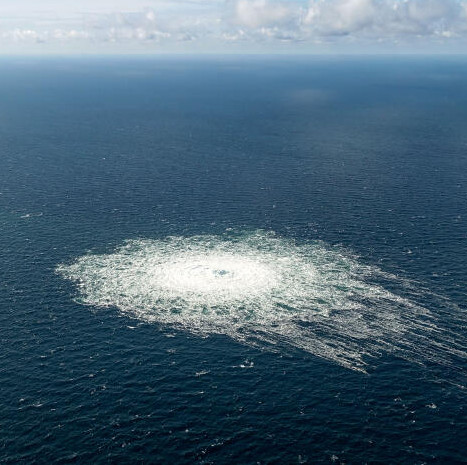
© AP Photo/Eugene Hoshiko/TASS
The nuclear curse has been haunting Japan, no doubt about it. The only country to have been hit by an atomic bomb experienced a major disaster at the Fukushima-1 nuclear power plant in March 2011. Now, despite protests at home and abroad, it has to get rid of radioactive waste generated while cooling the three damaged reactors.
As defined by the government of Japan, radioactive water disposal into the Pacific Ocean began on August 24. It has been accumulating in the NPP territory for 12 years to exceed 1.25 million tons. With the plant’s storage facilities 98 percent full, and following years-long preparations, the Japanese government decided spend the next 30 years dumping it into the ocean.
Of course, preparations embrace careful filtration from radionuclides and premixing with seawater. However, this will not completely grant relief of tritium, a mildly radioactive isotope of hydrogen.
The decision is contradictory in its essence. The isotope’s half-life is 12 years, and one could have waited a bit longer to reduce radioactivity. However, the operator company claims that station territory has become overflown with "dirty water" tanks, and room is needed for dismantling reactors and completely disposing of all the equipment. Not the strongest argument given outright irritation and concern with both the Japanese and their neighbors.
And yet, official Tokyo did foresee issues and prepared to reduce political and reputational losses.
It is no secret (although no one boasts about it) that NPPs and nuclear cycle enterprises worldwide dump purified industrial water, including tritium-contaminated. To a greater or lesser degree, they do observe safety norms and standards, avoiding major scandals. However, the Fukushima brand is worse than Chernobyl, and a wave of criticism has been inevitable.
Tokyo has long been systematically conducting a global campaign to promote Japanese food safety, including from the NPP zone — fruits, fish and so on. And quite successfully, I must say, with a number of European countries having lifted restrictions they introduced following the 2011 accident.
Besides, two years ago, the Japanese government invited specialists with the IAEA, a UN agency to control atomic energy use, and after a lot of research, they expectedly announced that the waste disposal plan met global safety standards and would have "minor radiological effects on people and ecology." The Japanese authorities have claimed, in turn, that discharged water’s tritium content will be almost a thousand times lower than normal.
Following an authoritative statement of the kind, Japanese politicians and media embarked upon getting public opinion ready for an imminent dumping effort. Japan's neighbors have also become more active in this respect.
The Russian and Chinese Foreign Ministries criticized the decision, with China introducing detailed checkout measures for Japan’s fish products, and later a temporary ban on its imports. Taiwan also declared strengthened control. Hong Kong authorities will ban seafood imports from 10 Japanese prefectures starting August 24. Similar measures have been taken by Macau.
The Seoul government has made it clear that it won’t protest or endorse the dumping — South Korea and Japan are currently experiencing a "field day" in their bilateral relations. The country's opposition parties are, however, clearly dissatisfied and intend to speak up.
This reaction should not be seen as political calculus alone.
First, there is no full-length information about the decision’s long-term effects. Thus, Robert Richmond from the University of Hawaii, who is part of an expert group engaging 18 Pacific island nations to assess disposal impact, notes: "We’re unanimous in saying we don’t see enough information to support dumping the radioactively contaminated water into the ocean."
Radionuclide contamination in wastewater may be transmitted via the food web by means of minor organisms like phytoplankton to the largest, such as tuna, the expert said. These radionuclides accumulate over time, eventually reaching levels high enough to damage DNA and RNA cells when ingested with seafood. This is fraught with long-term concerns about cancer, he believes.
Greenpeace (deemed undesirable in Russia) has also criticized the water discharge plan, saying that it defies scientific data and fishing company concerns.
Actually, 53 percent of the Japanese support the government's water recycling plan, and 41 percent don’t. 75 percent of those polled believe that the government has taken insufficient moves to prevent reputational damage to Japanese seafoods, an Asahi newspaper survey revealed. And at least 88.1 percent fear that dumped Fukushima water may hurt the economy over reputational and other kinds of risks, a poll by the Kyodo agency suggests.
A few days before the operation began, Japanese Prime Minister Fumio Kishida met with leaders of the affluent National Federation of Fisheries Co-Operative Associations, since fishermen fiercely demanded a water discharge waiver. And its head quite succinctly assessed the essence of the challenge: "Scientific security and social security are different things."
And that’s the other side of the coin.
Indeed, apart from Japan’s habitual atomic phobias, there is an extremely hostile attitude towards wide-sense filth, based on concepts of the local Shinto religion. At one time, it was about discrimination against descendants of Hiroshima victims when hiring, marrying, etc. Scientific clean-up methods are of no help here.
Neither is financial support pledged to the fishermen by the government. But there is nothing for it. Japan's energy sector is facing strategic hardship after the Fukushima accident and global energy market restructuring. Construction of new reactors and reintroduction of old facilities that were shut down after 2011, have bumped up against large-scale protests by the locals. Those can be only overcome by political will, aggressive propaganda and subsidies, which we do observe as illustrated by plans to dispose of Fukushima’s "dirty water".
Meanwhile, the next stage of Japan’s atomic ordeal is to analyze burned-out reactors still featuring nuclear processes. And this will apparently become the next act in the entire Fukushima drama.









